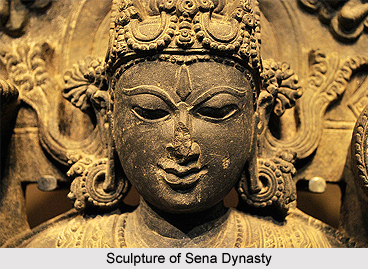 Dynasties of Bihar comprised of the imperial Gupta Empire, Yaduvanshis and Kachwaha dynasty
Dynasties of Bihar comprised of the imperial Gupta Empire, Yaduvanshis and Kachwaha dynasty
The history of dynasties of Bihar starts with that of Gupta dynasty. In the twelfth century, a Gupta dynasty ruled from Jayapura, identified with modern Jayanagar, near Lakhisarai District in the Munger. King Yajnesagupta, was succeeded by Damodaragupta. His successor was king Devagupta. These three kings were feudatories of the Pala Dynasty. Devagupta was descended by son Maharajadhiraja Mahamandalika Rajadityagupta. His son Rajaputra Krishnagupta died before him. Rajadityagupta was succeeded by his grandson Maharajadhiraja Mahamandalika Samgramagupta. He ruled for more than seventeen years. Muhammad Bakhtyar Khilji had destroyed the Gupta power.
Pithi region is known to have been ruled by the Sena dynasty which included the region round Gaya. He was succeeded by his sons Buddhasena and Jayasena in second half of thirteenth century. The Karavala dynasty ruled in the Shahabad district, which formed part of Magadha, in the twelfth century AD. Sadhava is the earliest known member of this family. His son was king Ranadhavala, whose son Pratapadhavala is referred to as a Mahanayaka of Japila. His son and successor was king Sahasa. His two sons Vikrama and Indradhavala occupied the throne of their father in succession. Nothing definite is known of the family. A king named Pratapa, who is known to have been ruling in the Shahabad District in 1223 AD, might have been a successor of Indradhavala.
The Kachhawas belong to the Suryavanshi lineage, which claims descent from the Suryavansha of the ancient Kshatriyas. The Kachwahas or Kacchapghata dynasty was originally from Bihar who founded Gwalior and Narwar in the 8th century. A descendant of this dynasty Dulah Rai established his rule in Dhundhar in the eleventh century. The Kachchhapaghatas are generally considered to be the ancestors of the Rajput clan Kachwaha, but this has no historical substantiation. Three branches of this dynasty ruled in Gwalior, Narwar (Princely State of Narwar) and Dubkund.
The earliest known chief of the Gwalior branch is Lakshman. Gwalior was under the sway of the Dhanga, the king of Chandella Dynasty a feudatory of the Pratihara Vinayakapala of Kannauj. Maharajadhiraja Vajradaman, son of Lakshman, defeated the king of Gandhinagar who may be identified with the Pratihara Vijayapala. Vajradaman was followed in succession by Marigalaraja and Kirttiraja respectively. Kirttiraja revolted an attack of the king of Malava. It is probably Kirttiraja who surrendered to Mahmud of Ghazni when the latter invaded Gwalior
The known ruler of the family of Kachwaha family who ruled Chadoba is Arjuna, the son of Yuvaraja, and a feudatory of the Chandella Vidyadhar. He killed the Pratihara Rajyapala of Kannauj. His son and successor Abhimanyu was an ally of the Paramara Bhoja. Abhimanyu was succeeded by his son Vijayapala, who was succeeded by his son Vikramasimha. A third branch this dynasty ruled in Narwar, the ancient Nalapura. Gangasimha was the first ruler, his successor Saradasimha, and the latter`s successor was Virasimha.
A Yadu dynasty has ruled in Bayana, the ancient name of which was Sripatha. The kingdom of this dynasty includes the old Bharatpur State and the Mathura district. King Jaitapala ruled in the first half of the eleventh century. His successor was Vijayapala. Again he was succeeded by Tahanapala who, according to tradition, built the fort of Tahangarh. Tahanapala was followed in succession by Dharmapala, Kunwarpala and Ajayapala. An inscription says that Haripala was the son and successor of Ajayapala. Haripala was succeeded by Sohapala. It is believed that Anangapala was the successor of Sohapala. Anangapala was followed in sequence by Prithvipala, Rajapala and Trilokapala.



















